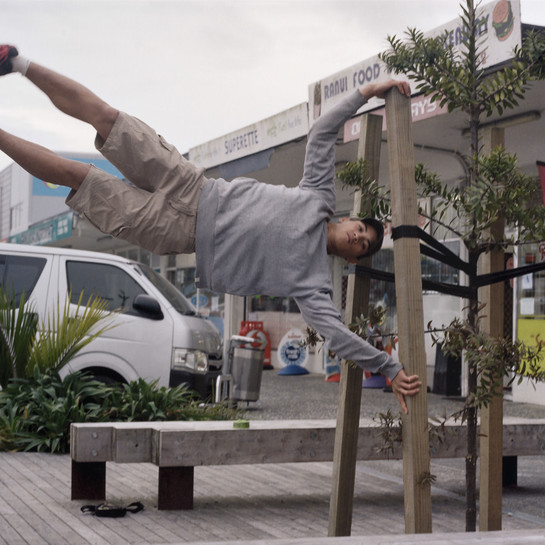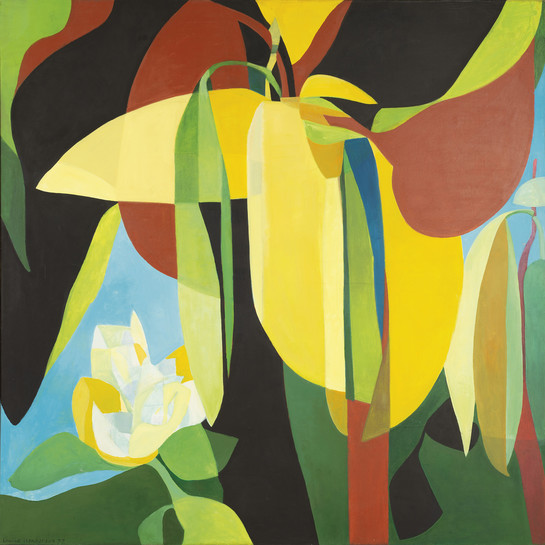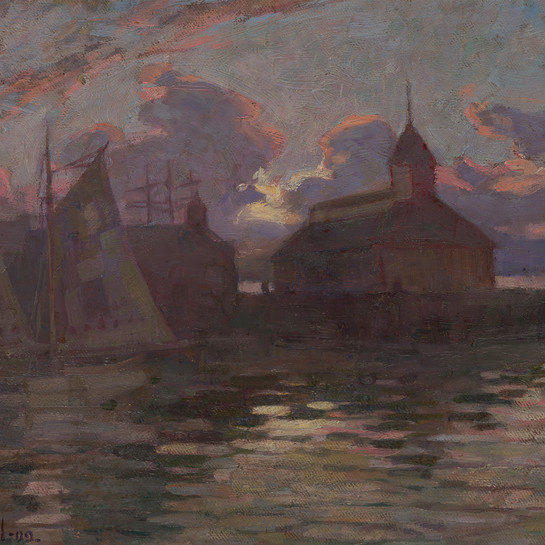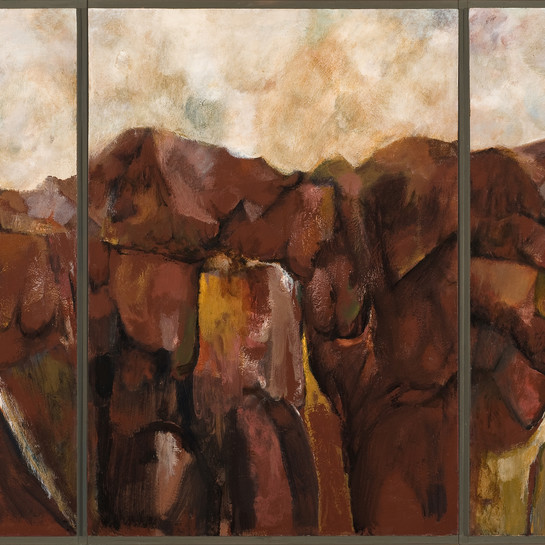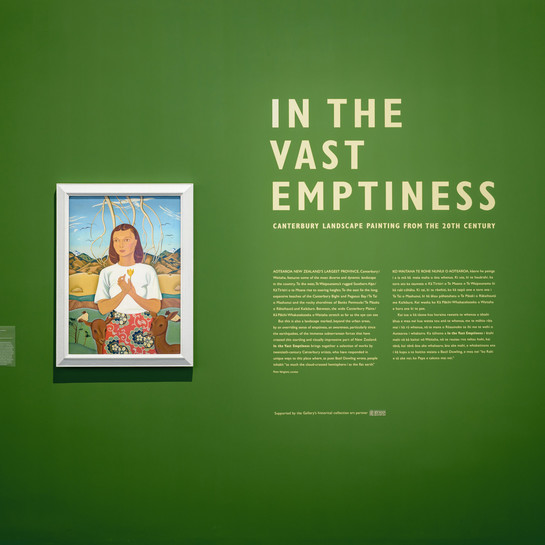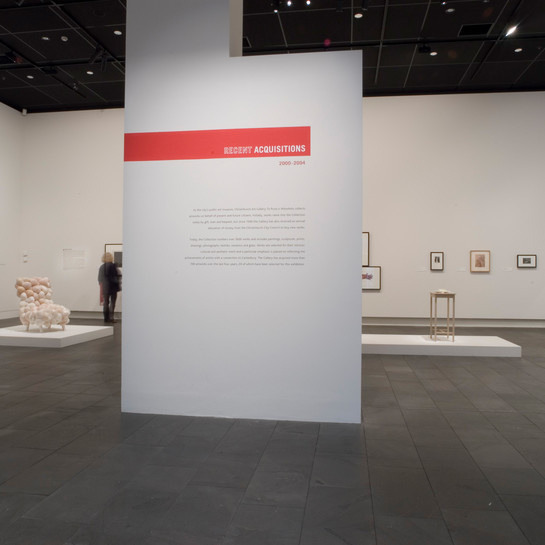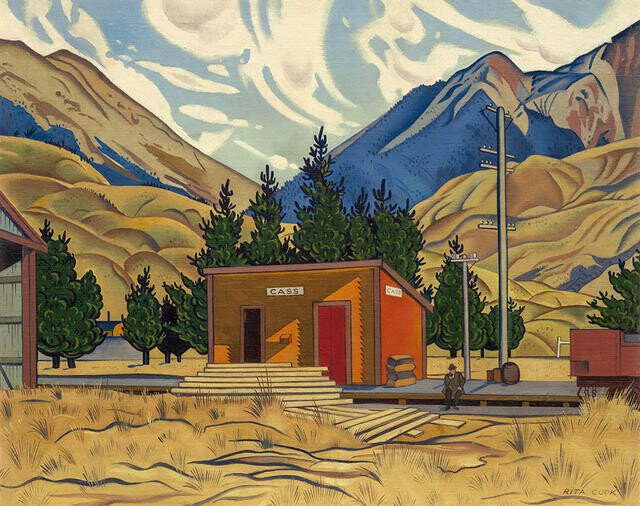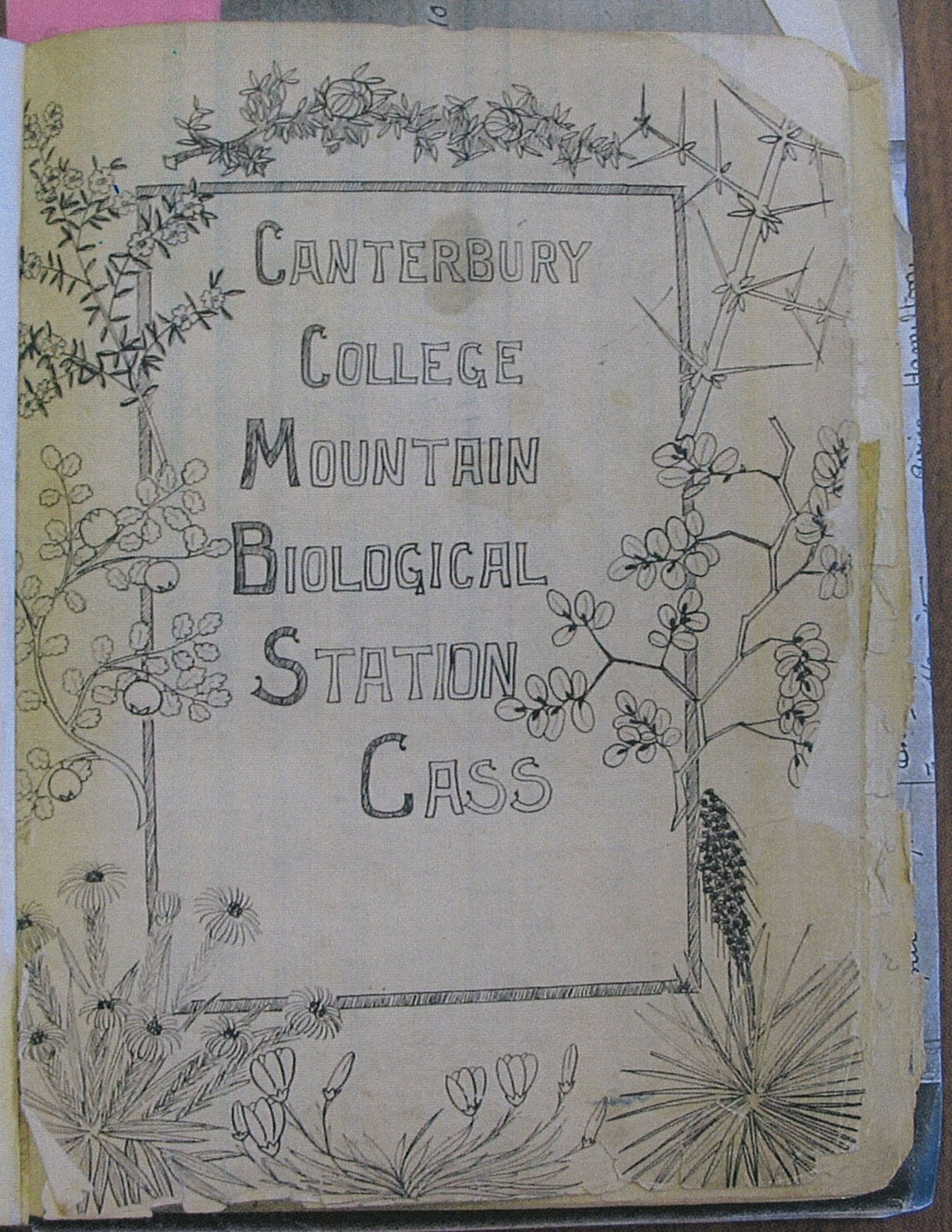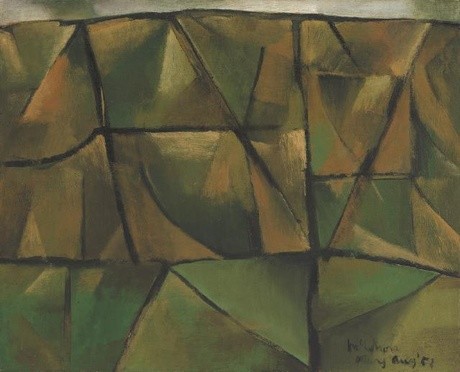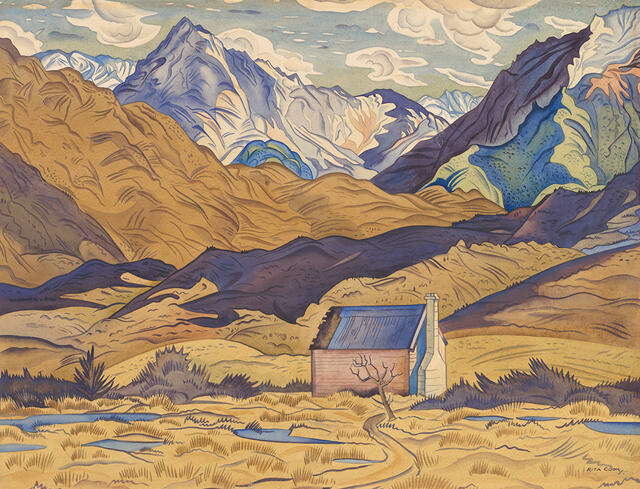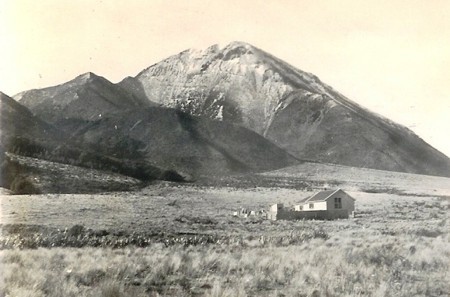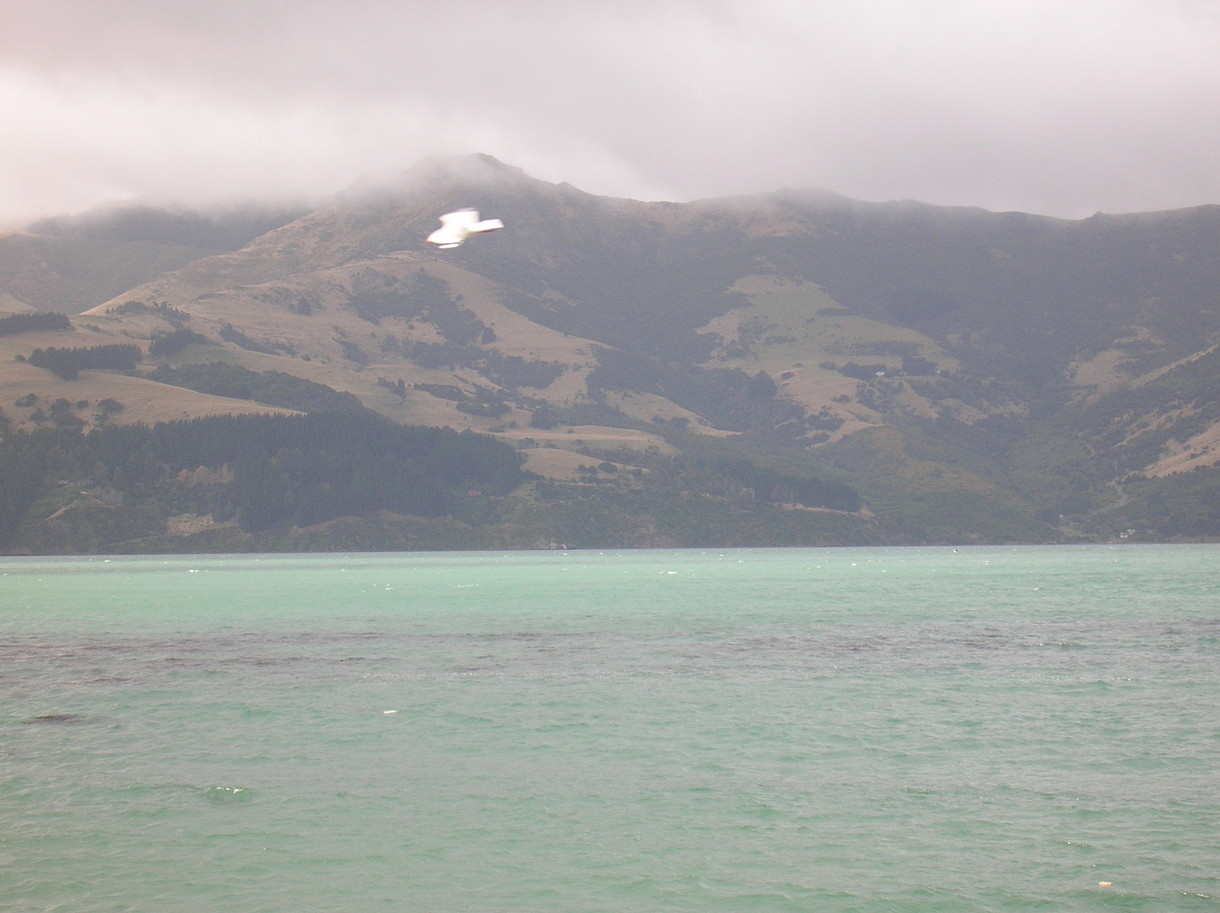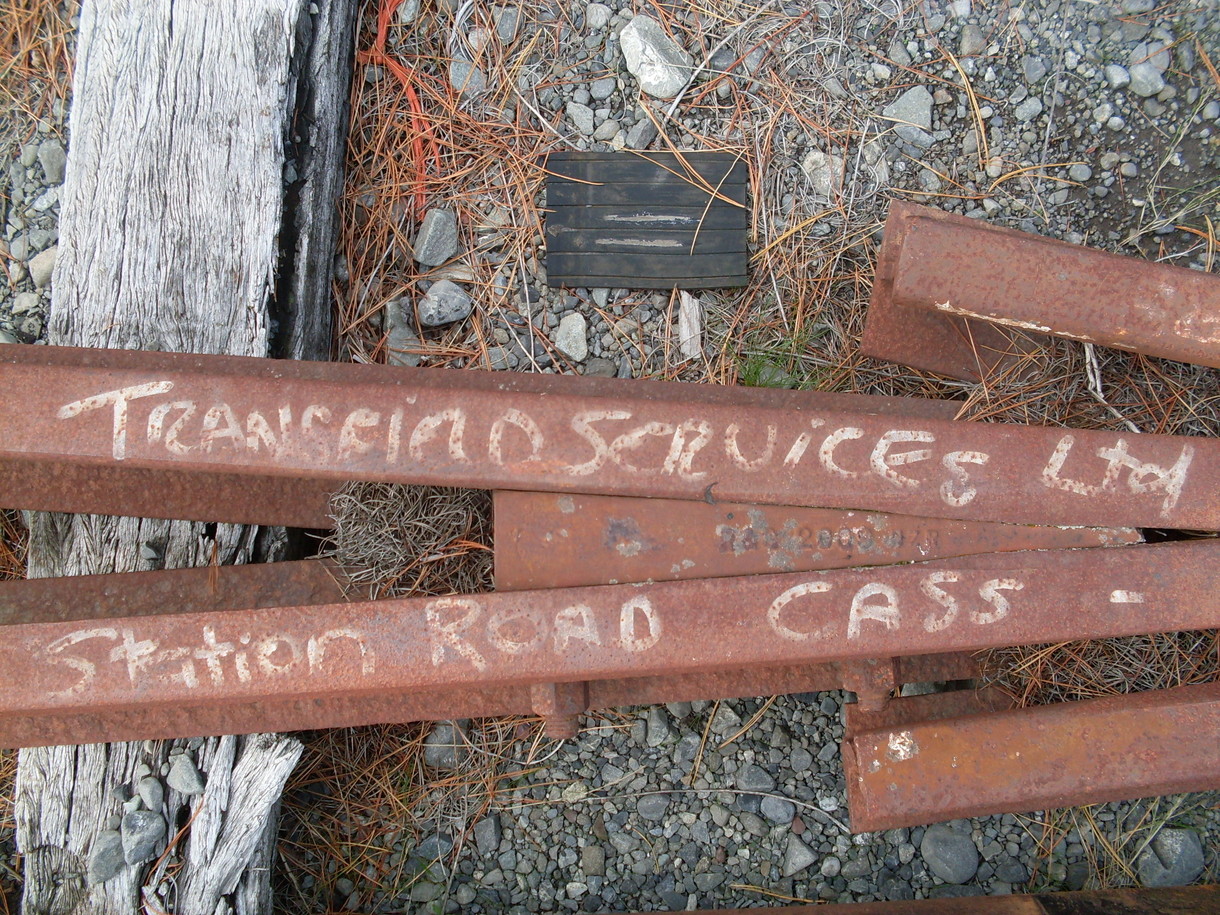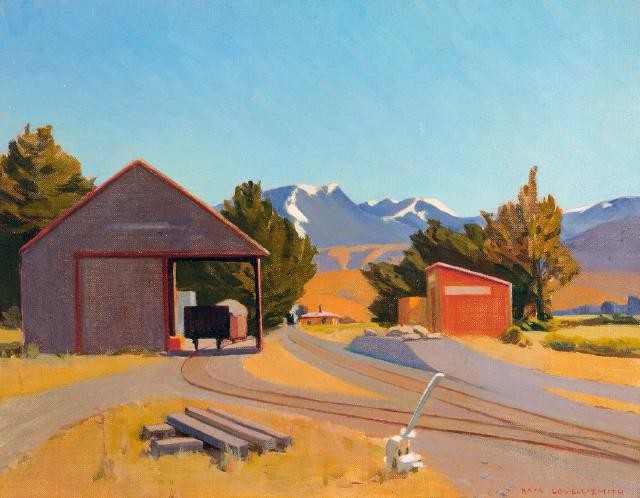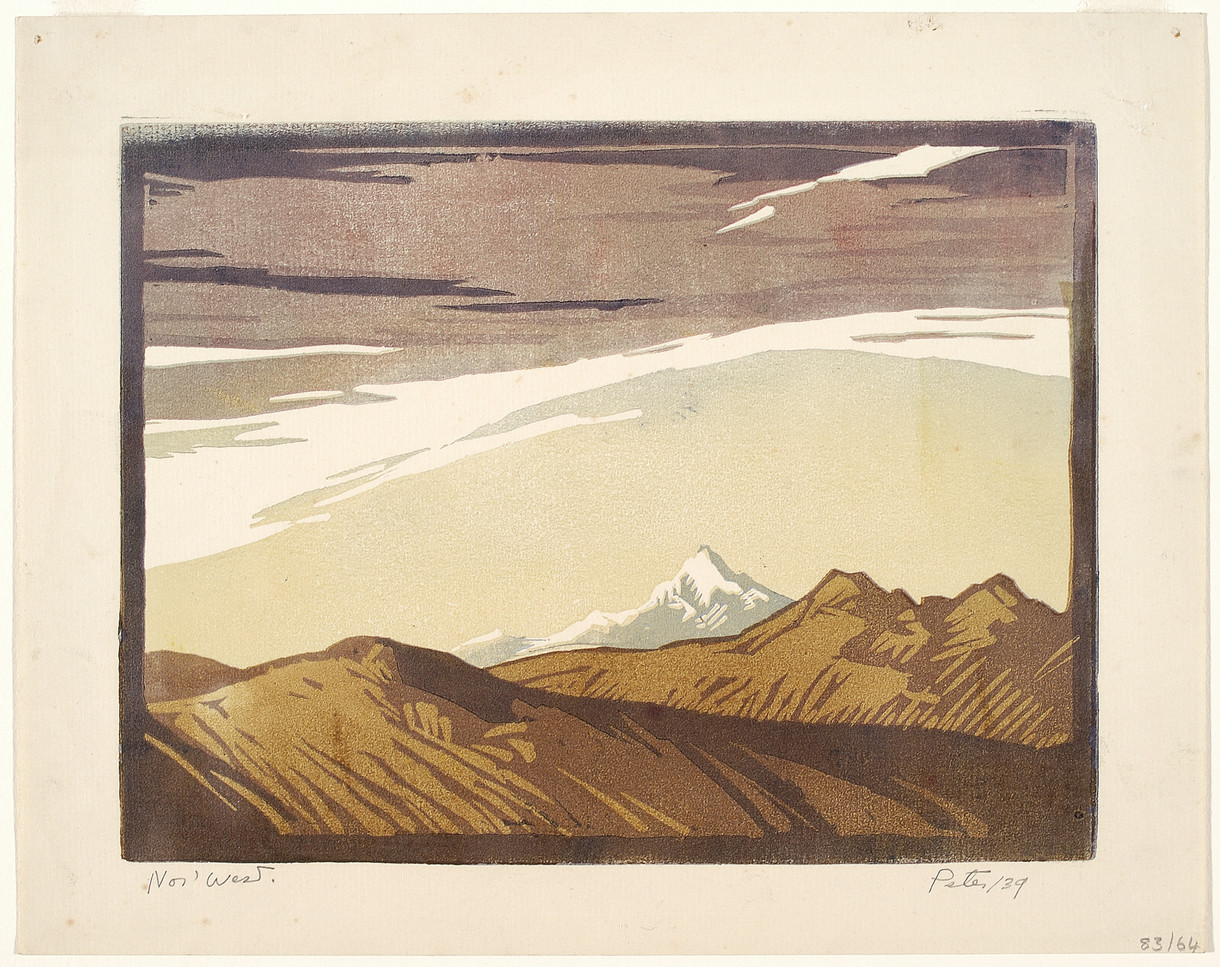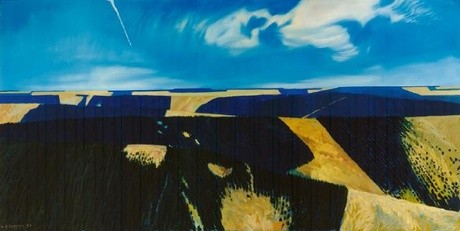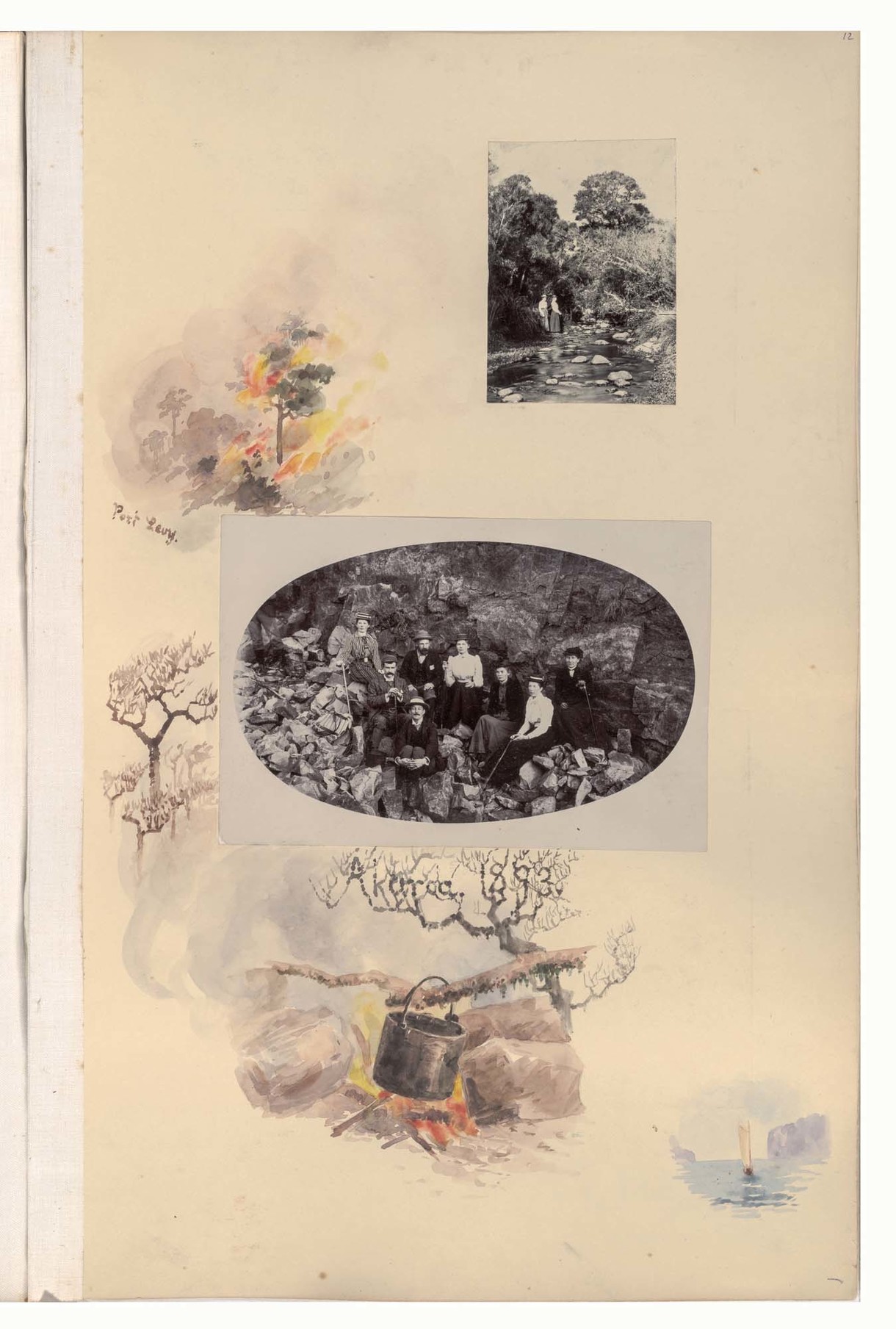Louise Henderson
France / Aotearoa New Zealand, b.1902, d.1994
Plain and Hills
- 1936
- Oil on canvas board
- Purchased 2003
- 482 x 545mm
- 2003/95
- View on google maps
Tags: hills, landscapes (representations), mountains, natural landscapes, roads, snow (precipitation), trees, utility poles
French-born Louise Henderson married a New Zealander and came to Ōtautahi Christchurch in 1925. She relished the freedom of her new life, exploring in and painting the hill country of Te Waipounamu and often sleeping out alone under the stars. In 1936, she undertook a ten-day painting trip to Cass, in the Southern Alps, with her friends Rita Angus and Julia Scarvell. Her translation of that landscape is alive with luminous colour and dynamic movement, capturing jagged ridgelines, undulating hills and the curving lines of telegraph wires. The mountain, its slopes depicted blue with shadow, is called the Pyramid – much easier to look at than to climb.
(Perilous: Unheard Stories from the Collection, 6 August 2022- 21 July 2024)
Educator, politician and longtime Gallery supporter Margaret Austin has supplied the following notes on this painting:
The glacial moraine separates the Cass Valley from the Waimakariri River near the Mt White Bridge where the train would stop if you let them know in advance.
The powerline is going up Transmission Gully where there is a track reckoned to be a shortcut to the Waimak but very hard work. The blue mountain is The Pyramid - a misery climb!! Behind it is Woolshed Hill rising out of the Hawdon River and a favoured site for School Field Trips since the Boys’ High School has a hut at its base. The black line about two thirds up marks a fairly large swamp with lots of important botanical specimens and a site for collecting mountain grasshoppers. The mountains at the back rise out of the Poulter River and Mt White Station. The best way of getting there was to walk up the Andrews Stream, through the Hallelujah swamp (wet to the waist usually) and down to the Poulter.
Exhibition History
[Louise Henderson: From Life, 27 June – 11 October 2020] (https://christchurchartgallery.org.nz/exhibitions/louise-henderson-from-life)
Henderson produced this landscape on a ten-day painting trip to the railway settlement of Cass in the Southern Alps, with her friends Rita Angus and Julia Scarvell. It is a companion work to Angus’s more famous Cass, and similarly represents the vigorous new spirit of critical enquiry in New Zealand art of the 1930s. Like Angus, Henderson used a simplified modernist treatment of form to represent the modernising landscape, depicting its utilitarian buildings and rickety telegraph poles. The faint traces of human presence she captures underline the essential majesty of the alpine landscape. Up in the mountains, Henderson found the freedom to further develop ways of painting – and seeing – that reflected the independence of her distinctive vision.
(Louise Henderson: From Life, 27 June – 11 October 2020)
In 1930s New Zealand there was wide discussion about what was unique about the New Zealand situation; what it was that made us different from the rest of the world. Artists and writers began exploring ways to identify our national identity. A number of artists began painting the Canterbury High Country, most famously Rita Angus and her landscape painting of the railway station at Cass. One reviewer in 1936 observed that there was a new quality in the landscapes exhibited in Christchurch that seemed ‘to consist in a removal of the romantic mists which used to obscure mountains and the Canterbury countryside generally. The light now is clear and hard, the colours are in flat planes, and the effect is of seeing the country through a gem-like atmosphere. There is also a new romantic standpoint – an insistence on the isolation and brooding loneliness of the hills.’ It’s a statement that certainly rings true with the Canterbury paintings of Rita Angus, Leo Bensemann, Louise Henderson, Rata Lovell-Smith and Bill Sutton.
(March 2018)
He Rau Maharataka Whenua: A Memory of Land, 17 September 2016 – 18 February 2017
Mystery still shrouds the exact location shown in this work by Louise Henderson, but the vista, as well as the work’s date, make a convincing argument for it being painted on the same inland venture with fellow artists Julia Scarvell and Rita Angus in 1936, when Angus painted Cass.
'Those passes and those routes – Noti Raureka [the Browning Pass], Tiori Pātea [Haast Pass] – they were all done and opened up with Māori guides, even though they’ve been named by Pākehā surveyors since.' —Sir Tipene O’Regan
In the vast emptiness, 8 January - 21 August 2016
Late in her career Louise Henderson recounted her time in Christchurch during the 1930s, calling Christchurch “a cultured place, dull but sound”. She compared her own working process to that of her contemporary Rita Angus: “I worked on a big area, involving the intellectual process of the work itself, the overall structure and concept. Rita worked in small areas, built up the surface, bit by bit; there are more surface marks in her work.”
The two artists were firm friends and often made painting trips together out into the Canterbury landscape in Henderson’s car – their most famous trip was to Cass in 1936, after which Angus painted the exemplary Cass, which is shown to the left of this work. Henderson said of their connection, “It was good to have another artist to talk to. People didn’t approve of woman artists in New Zealand either. I was used to that. It was not new to me because my own mother had never approved.”
As with Angus, Henderson’s love of the Canterbury landscape is evident in her paintings. She commented, “I thought the South was very beautiful. I learnt to sleep in my sleeping bag and stay out in the bush at night, under a tree. I enjoyed all that tremendously.”
Louise Henderson completed Plains and Hills after visiting the Cass region in the Southern Alps west of Christchurch in May 1936. Henderson travelled to the region with fellow artists Rita Angus and Julia Scarvell. The trio stayed at the Canterbury College Biological Station and made daily outings into the surrounding countryside to sketch. Henderson and Angus developed a strikingly similar style, most obviously in their use of defined shapes, blocks of strong colour and a clear pervading light.
Born in France, Louise Etiennette Sidonie Sauze studied at the School of Industrial Arts in Paris. She married Hubert Henderson and came to live in Christchurch in 1925. She taught in Christchurch and Wellington until 1950, then moved to Auckland where she took up painting full time. In 1952 Henderson studied in Paris under the cubist artist Jean Metzinger (1883–1956). She later taught at Elam School of Art in Auckland and briefly at Darlinghurst School of Art in Sydney. (Label date unknown)
